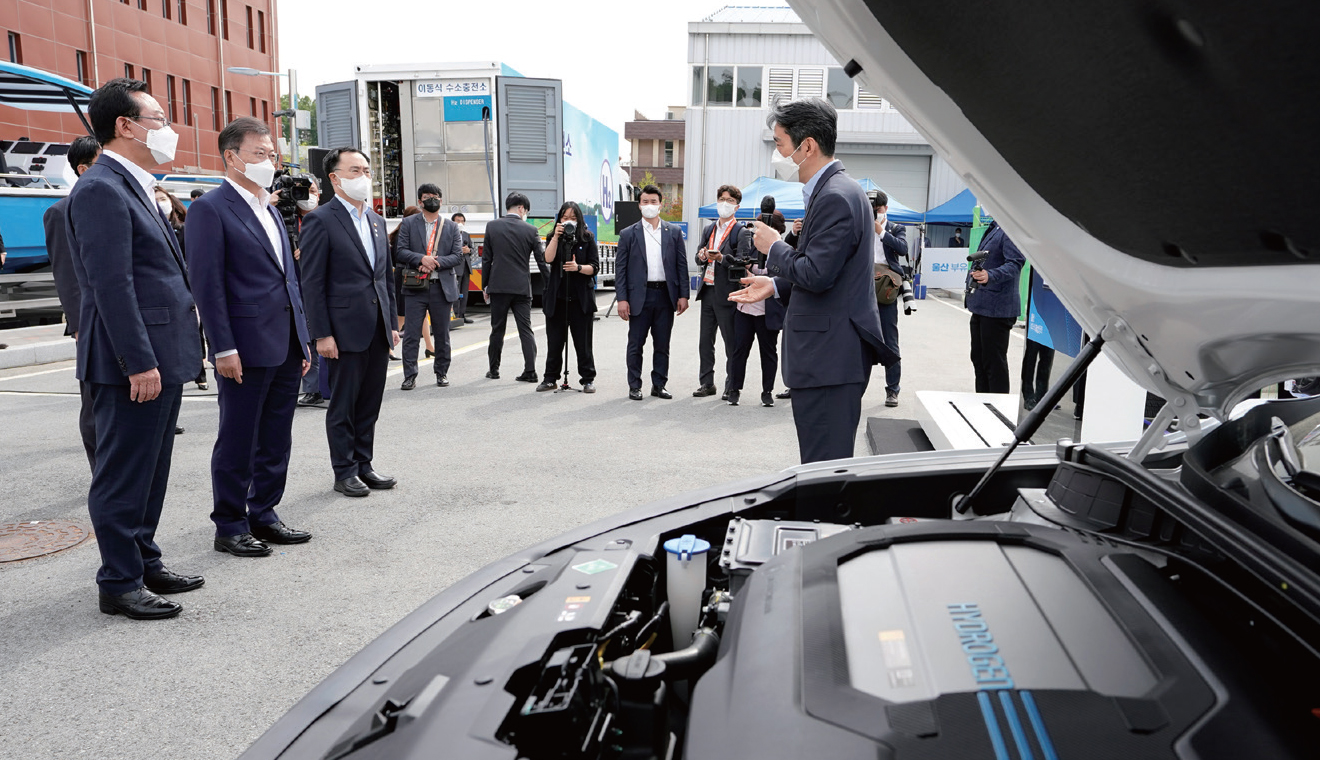August 2021

August 2021
The Korean New Deal 2.0 takes the national development strategy for post-pandemic economic growth to a new level. The enhanced version aims to further accelerate the nation’s digital and green energy transitions, focusing more investment on future industries and human resources.
Written by
Sohn Ji-ae
 President Moon Jae-in on July 14 announces the Korean New Deal 2.0 at Cheong Wa Dae. © Cheong Wa Dae
President Moon Jae-in on July 14 announces the Korean New Deal 2.0 at Cheong Wa Dae. © Cheong Wa Dae
A year ago, the Korean government kicked off the Korean New Deal as a means of overcoming the economic hardships caused by the COVID-19 pandemic. The government’s main goal with the initiative was to revive the pandemic-battered economy by investing in future industries that could bring a large number of jobs to the nation.
The initiative’s focus areas were centered on “digital technology” and “green energy” global trend: the transition to a “low-carbon economy.”
Throughout the year since its launch, the New Deal initiative became a driving force for change in the post-pandemic economy. The nation saw digital and green innovation accelerate. Among other things, the establishment of integrated data platforms made it easier for citizens and business to access useful data, including AI learning data. As a result, the domestic data markets grew by about 14.3 percent year-on-year, the Ministry of Science and ICT said. In addition, smart devices and equipment were supplied to 310,000 classrooms across the country.
The supply of eco-friendly vehicles, like electric and hydrogen cars, significantly increased by more than about 100 percent over the past year. The country’s generation capacity of renewable energy, too, grew to about 21.9 gigawatts from 17.6 gigawatts, turning a large number of living spaces and workplaces into green spaces.
 As one of the Korean New Deal’s pillars, the Green New Deal aims to increase a supply of eco-friendly vehicles, like hydrogen cars. © Yonhap News
As one of the Korean New Deal’s pillars, the Green New Deal aims to increase a supply of eco-friendly vehicles, like hydrogen cars. © Yonhap News
Among other things, vaccine diplomacy is regarded as one of President Moon’s remarkable achievements in his trips. He certainly made the most of the in-person meetings to strengthen vaccine cooperation with other countries.
His efforts paid off when he drew President Biden’s agreement on establishing a comprehensive vaccine partnership to expand the manufacture and supplies of vaccines. He also secured the U.S. government’s pledge to supply enough doses to vaccinate almost all active Korean soldiers, amounting to 550,000.
President Moon continued vaccine diplomacy in his next overseas destination, the U.K. where he joined the G7 summit as a guest, by meeting with the CEOs of leading pharmaceutical companies, including Astra-Zeneca CEO Pascal Soriot. In the meetings, the chief executive shared his vision for hosting a “global vaccine production hub” in Korea to scale up productions for not only domestic, but also global supply.
As part of an effort to reduce the global vaccine shortage, President Moon at the G7 session on health unveiled Seoul’s plan to offer USD 100 million in grants this year for the COVAX Advance Market Commitment (AMC), aiming to help developing and lower-income nations, including North Korea, access vaccines. He then pledged that the nation would provide cash or materials worth USD 100 million in additional aid next year.
Although the Korean New Deal was initially designed to lift the nation out of the COVID-19 crisis, it now serves as a longterm national development strategy for the nation.
“We have successfully turned the COVID-19 crisis into an opportunity and demonstrated our capabilities to the fullest. The Korean New Deal will be our strongest policy tool,” said President Moon. “It constitutes hope for surmounting the pandemic and a future strategy for Korea that extends beyond my administration.”